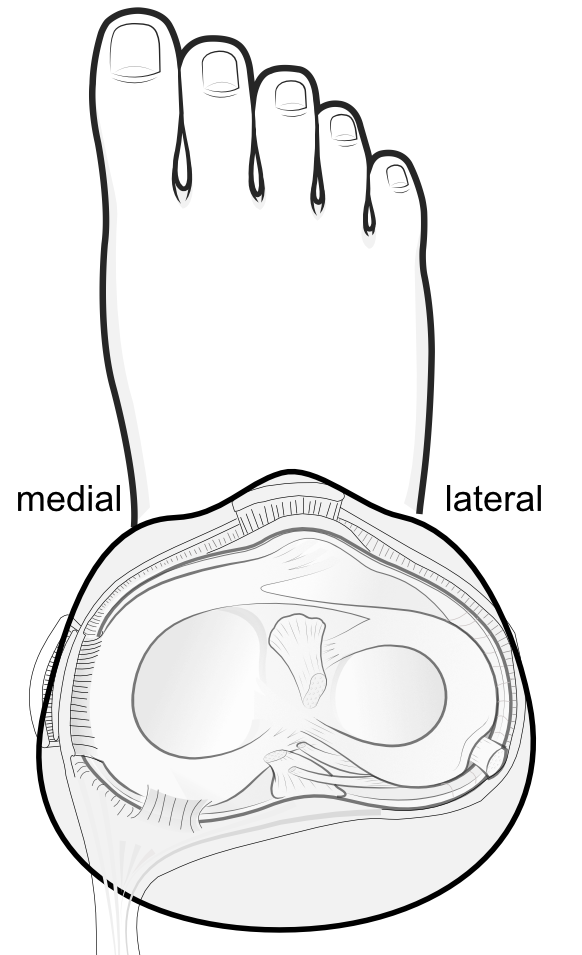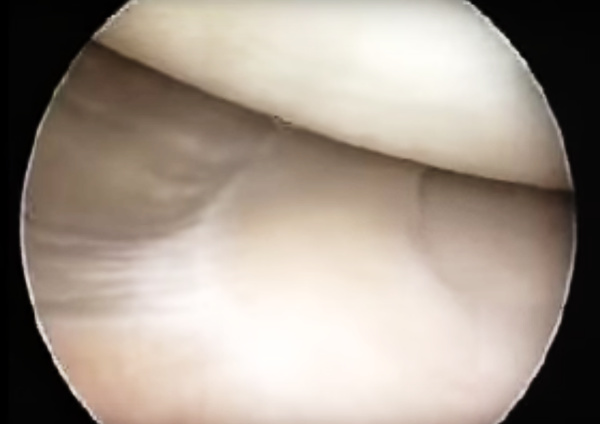The medial meniscus is the shock absorber of the knee on the medial (or inner) aspect of the joint between the femur and tibia bones.

The medial meniscus is more 'C-shaped' than the lateral meniscus, and has a more intimate relationship to the capsule.
[Looking down at the top of the tibia bone in the middle of the knee.]

Detail to show the intimate relationship of the meniscus to the capsule.
[Looking inside the knee from the front.]

Arthroscopic photograph to show relationship of the medial meniscus to the rounded femur above, the flattened tibia below and the capsule on the outer side.
[Looking deep inside the knee close up to the meniscus.]
Where is the medial meniscus?
Each knee has both a medial and a lateral meniscus seated upon the upper part of the tibia or shinbone. Each is held in position via 'roots' that tether the front and back (anterior and posterior horns) of each meniscus to the underlying tibia bone, and there are also ligamentous connections to the outer capsule and via it to the bones of tibia and femur.
Torn medial meniscus
The medial meniscus is less mobile than the lateral meniscus, because of its closer relationship to the capsule of the joint. For this reason it is more likely to be injured than the lateral meniscus. Tears may involve the substance of the meniscus - body, anterior horn, posterior horn - or the meniscal root may avulse from the bone. Ramp tears involve the are where the meniscus joins to the capsule.
Do medial meniscus tears heal?
Healing of tears in the medial meniscus depend largely on the nature of the tear, its situation, and long long ago the meniscus became torn. Longitudinal tears in the outer rim heal best because of the good blood supply there.